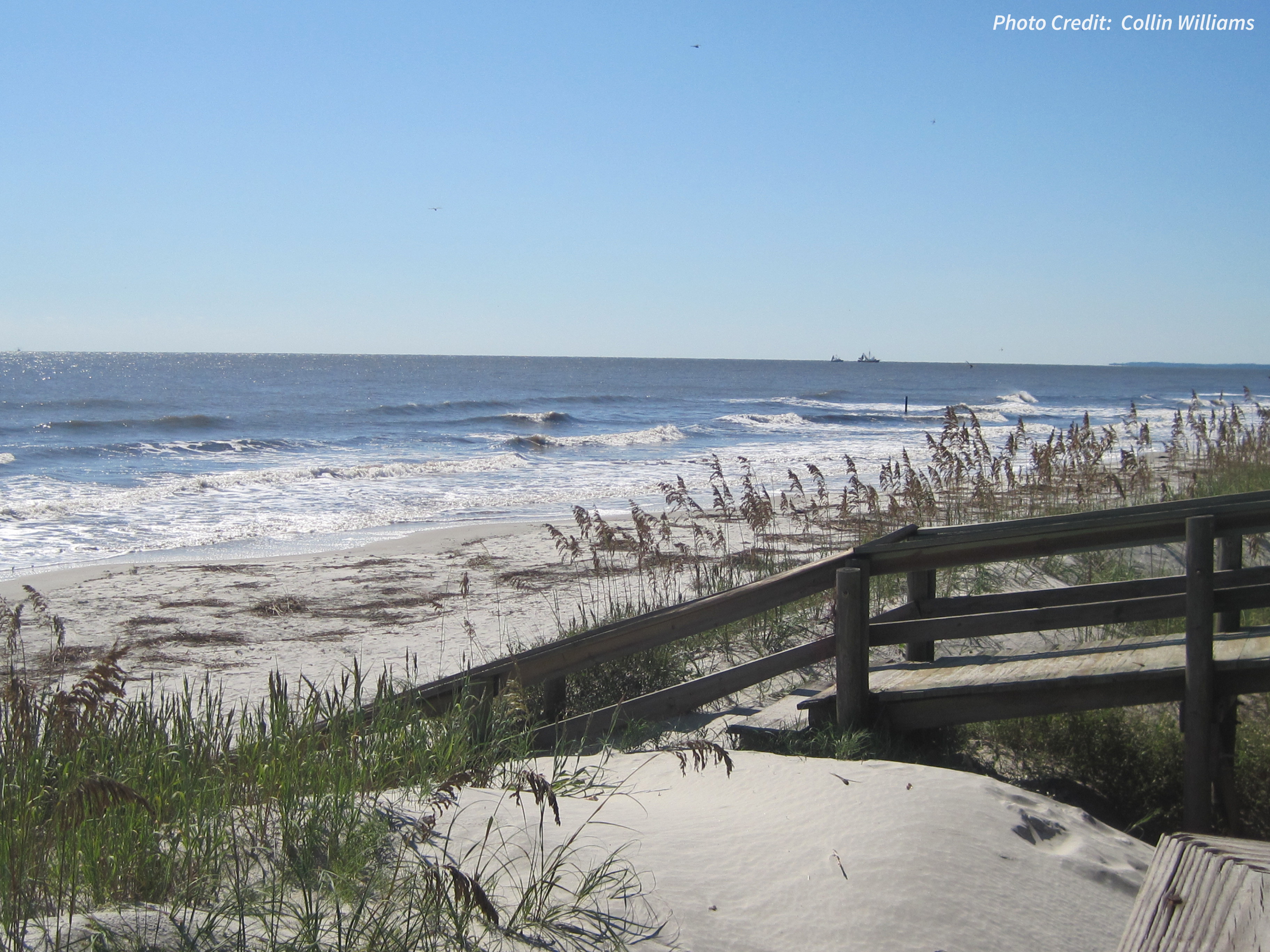States / Georgia
Georgia
Coastal Management
The focus is on managing coastal areas to increase resilience, with an emphasis on balancing environmental, economic, and human wellbeing. Mandated by the Coastal Zone Management Act, the two federal programs designed for this task are the National Coastal Zone Management Program and the National Estuarine Research Reserve System. Programs are administered, on the federal side, by NOAA’s Office for Coastal Management, in partnership with the coastal states.

State Programs
Coastal Zone Management
Georgia Coastal Management Program. Established in 1998, the mission of the Georgia Coastal Management Program is to strike a balance between boosting the economy and safeguarding the coast’s natural beauty, environment, history, archaeology, and recreational opportunities. The program covers 11 coastal counties: Brantley, Bryan, Camden, Charlton, Chatham, Effingham, Glynn, Liberty, Long, McIntosh, and Wayne, and caters to the needs of the people, industries, and resources along Georgia's coast.
National Estuarine Research Reserves
Sapelo Island National Estuarine Research Reserve. Designated in 1976 and protecting 7,500 acres, this reserve is located 7.5 miles northeast of Darien, Georgia. It occupies over one-third of Sapelo Island, Georgia’s fourth largest barrier island, and one of the most undisturbed. The reserve covers 1,440 acres of upland—mostly maritime or mixed oak-pine forest—5,245 acres of saltmarsh, and over 800 acres of open water. (See handout)
Impact Stories
Stories that showcase the recent work of this state's coastal management efforts.
- Airstrip Field Maritime Forest Restoration
- Building a Watershed Resilience Plan for the St. Marys River and its Community (FL, GA)
- Creating Final Design and Permitting for a Living Shoreline at Martha Randolph Stevens Park
- Building Capacity to Conserve Salt Marsh Habitat within Coastal Communities
- Lanier Boulevard Flood Resiliency through Acquisition Project
- Reviving Georgia’s Coastal Salt Marshes
- Tybee Island’s Dune Restoration Project Sets New Standard for Coastal Resilience
- Ossabaw Island Living Shoreline: A Collaboration to Model Resiliency through Ecosystem Restoration
- NOAA Strengthens Resilience Before, During, and After Disasters
Additional Resources
*Fast Fact Sources:
People: American Community Survey Five-Year Estimates
Beaches and Estuaries: Shoreline Mileage of the United States
Employment and Economy:
Marine Economy for the Coastal U.S. States
Marine Economy for the U.S. Territories